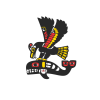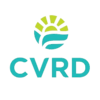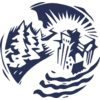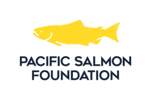News Release, CVRD and Cowichan Tribes, August 15 2012

A collaborative initiative involving the Cowichan Valley Regional District (CVRD), Cowichan Tribes, BC Ministry of Environment, federal agencies, and a variety of local conservation groups and stakeholders was announced today by CVRD Chair Rob Hutchins and Cowichan Tribes Chief Harvey Alphonse. The $200,000 Cowichan Watershed Partnership Project is intended to initiate the restoration and protection of water quality in the Cowichan Watershed. People who are familiar with the watershed recognize that while there are positive practices happening in the watershed, there are a number of serious negative water quality indicators to address, including:
- The Cowichan Bay shellfish closure that has been in place since the early 1970’s due to contamination;
- Significant fish kills (juvenile salmon) in portions of the lower watershed, which may be related to contamination;
- General water quality problems related to cumulative impacts of turbidity, nutrients and bacteriological contamination – particularly in the lower Cowichan and Koksilah Rivers.
“Those are the issues that led us to establish our two water quality targets.” said Rob Hutchins, who along with Chief Harvey Alphonse, is also Co-chair of the Cowichan Watershed Board. “Simply stated, the first target is clean water. We need to meet provincial standards for surface water quality. It’s a no brainer. People throughout the watershed want to feel that the water is clean and not contaminated.”
“The second target is to be able to eat shellfish from the Cowichan estuary by 2020” added Chief Alphonse. “The clam beds in Cowichan Bay are incredibly productive but the clams aren’t safe to eat – it’s shameful. Those clams are the canary in the coal mine. When we can eat them again we will have come a long way toward cleaning up this magnificent watershed.”
“The Watershed Board is contributing $80,000 to the Ministry of Environment to support water sampling and coordination of this project”, added Rob Hutchins. “They are contributing staff expertise and additional funding for sampling.”
Cowichan Tribes is contributing staff time and $25,000 that it received from the federal government for determining levels of chemical contaminants in shellfish tissues.
The two and a half year comprehensive water quality monitoring project will begin in mid-August. There will be regular weekly water sampling during low flows to determine the baselines. Fall sampling will be timed to coincide with rain events so storm effects can be seen and to begin to identify the sources of pollution that are affecting our water bodies.
Year one will focus on the lower watershed. Sampling and monitoring will be expanded to include the Cowichan Lake area in year two. DNA analysis will also be used to help identify pollutant sources.
The list of partners who are contributing to this project is long. In addition to the CVRD, Cowichan Tribes, the Cowichan Watershed Board and Ministry of Environment, it includes the City of Duncan; Town of Lake Cowichan; Municipality of North Cowichan; Private Forest Landowners Association (including TimberWest and Island Timberlands); Department of Fisheries and Oceans; BC Ministry of Forests, Lands and Natural Resource Operations; Cowichan Stewardship Roundtable; Cowichan Lake and River Stewardship Society; Cowichan Land Trust; Cowichan Naturalists; and the BC Conservation Foundation – Living Rivers.
For further information please contact
Jenn K. George
Communications Coordinator
Cowichan Tribes
250-701-8381
Kate Miller
Manager Regional Environmental Policy
Cowichan Valley Regional District
250-746-2509
 Email
Email



